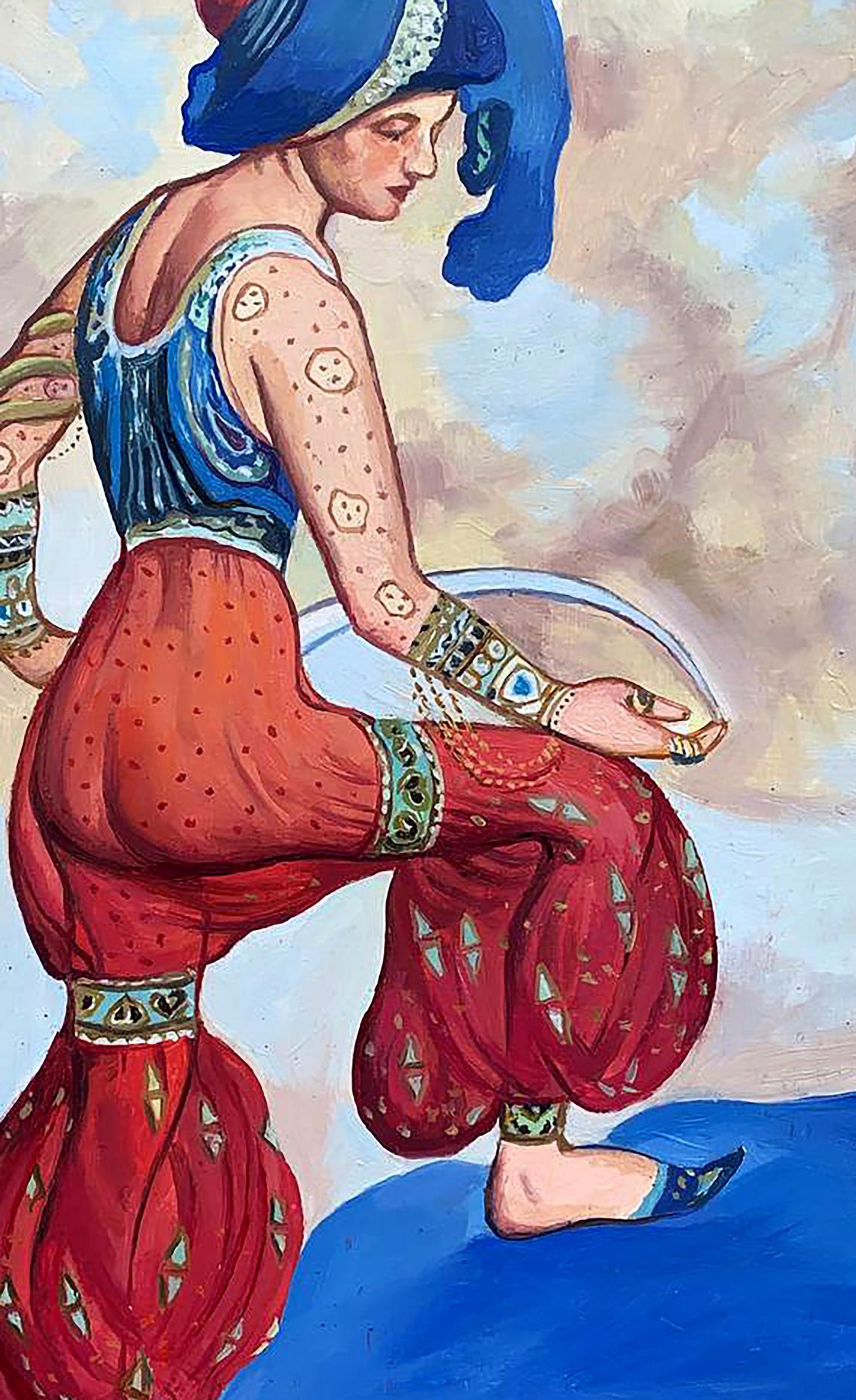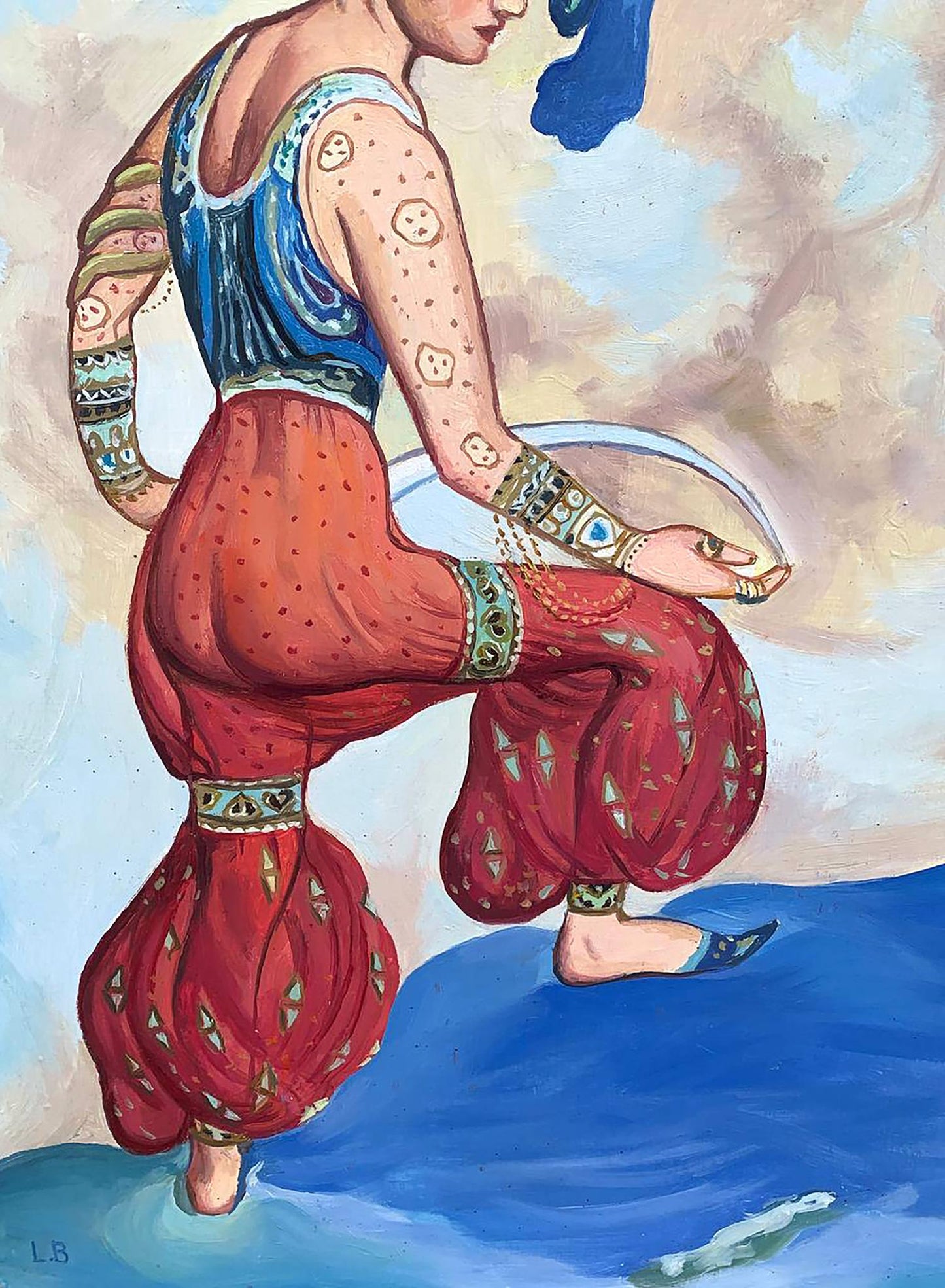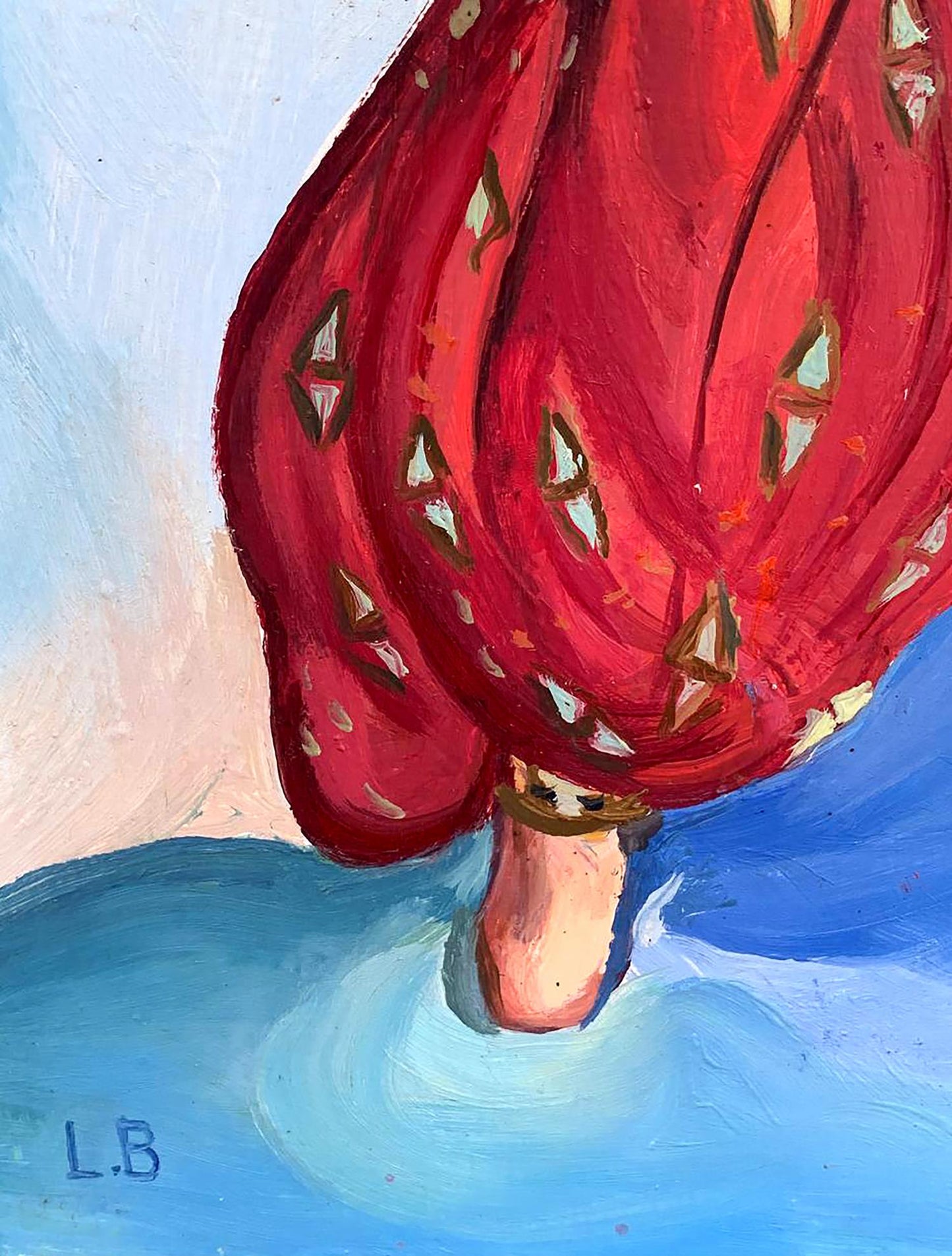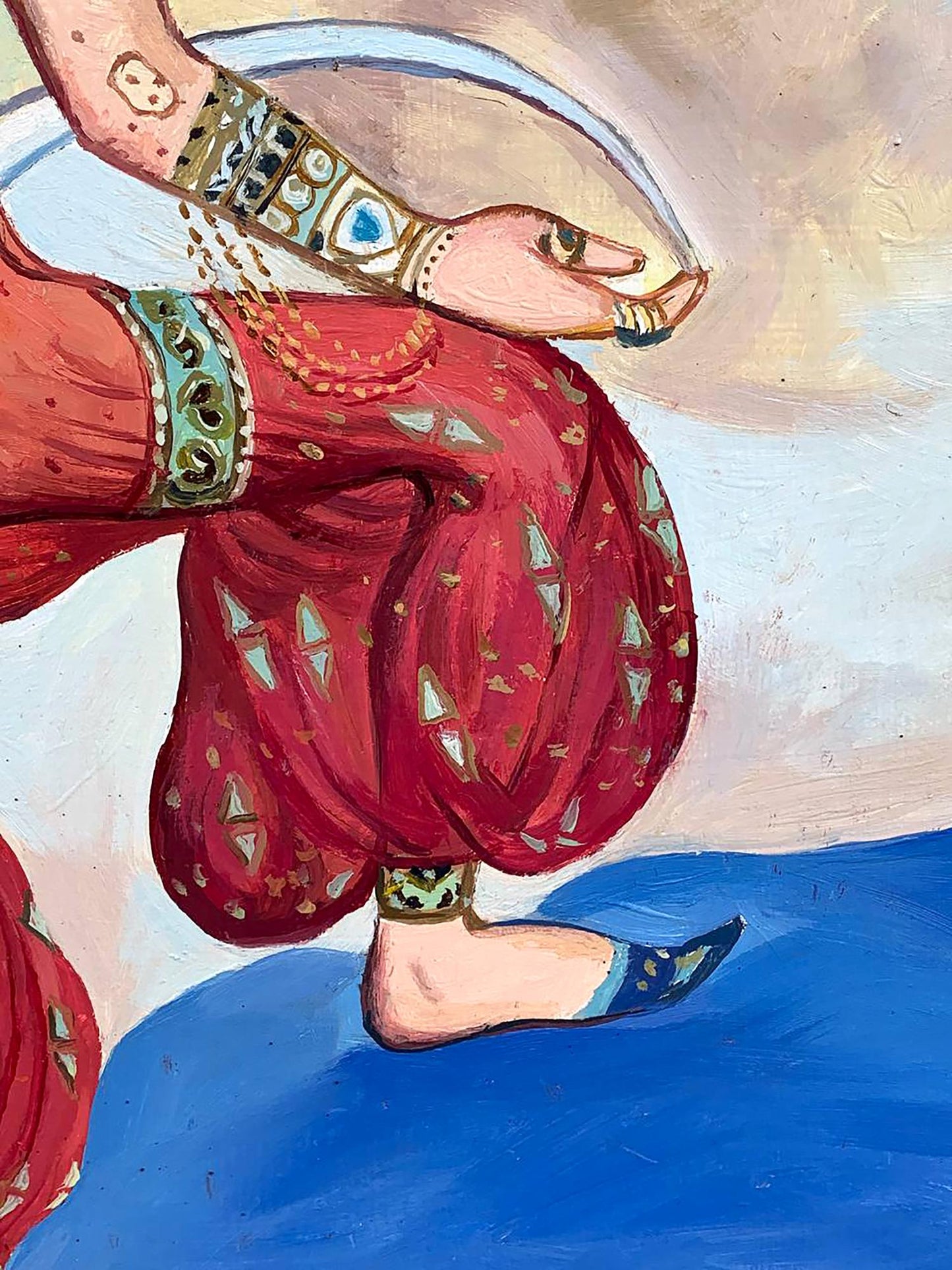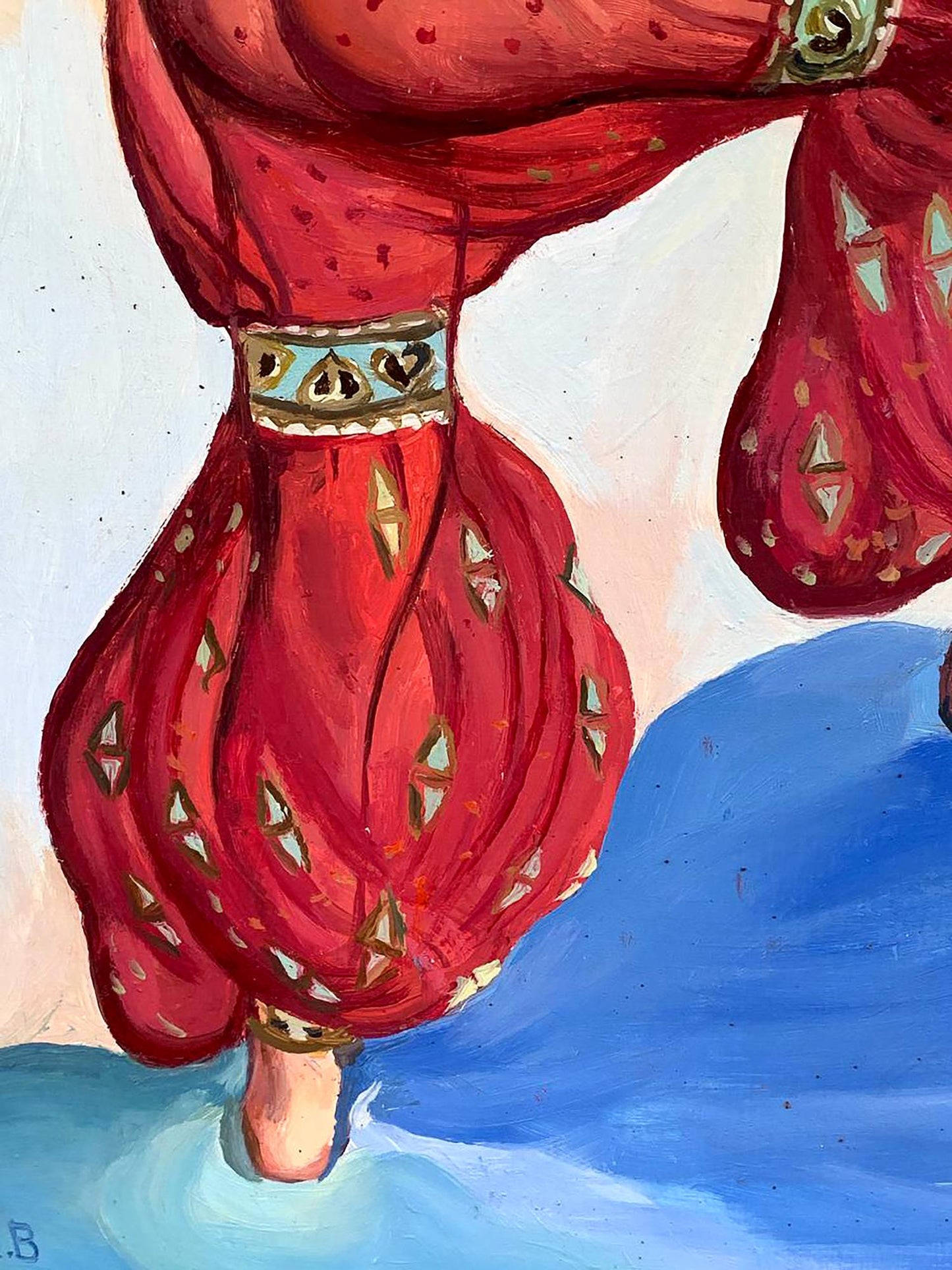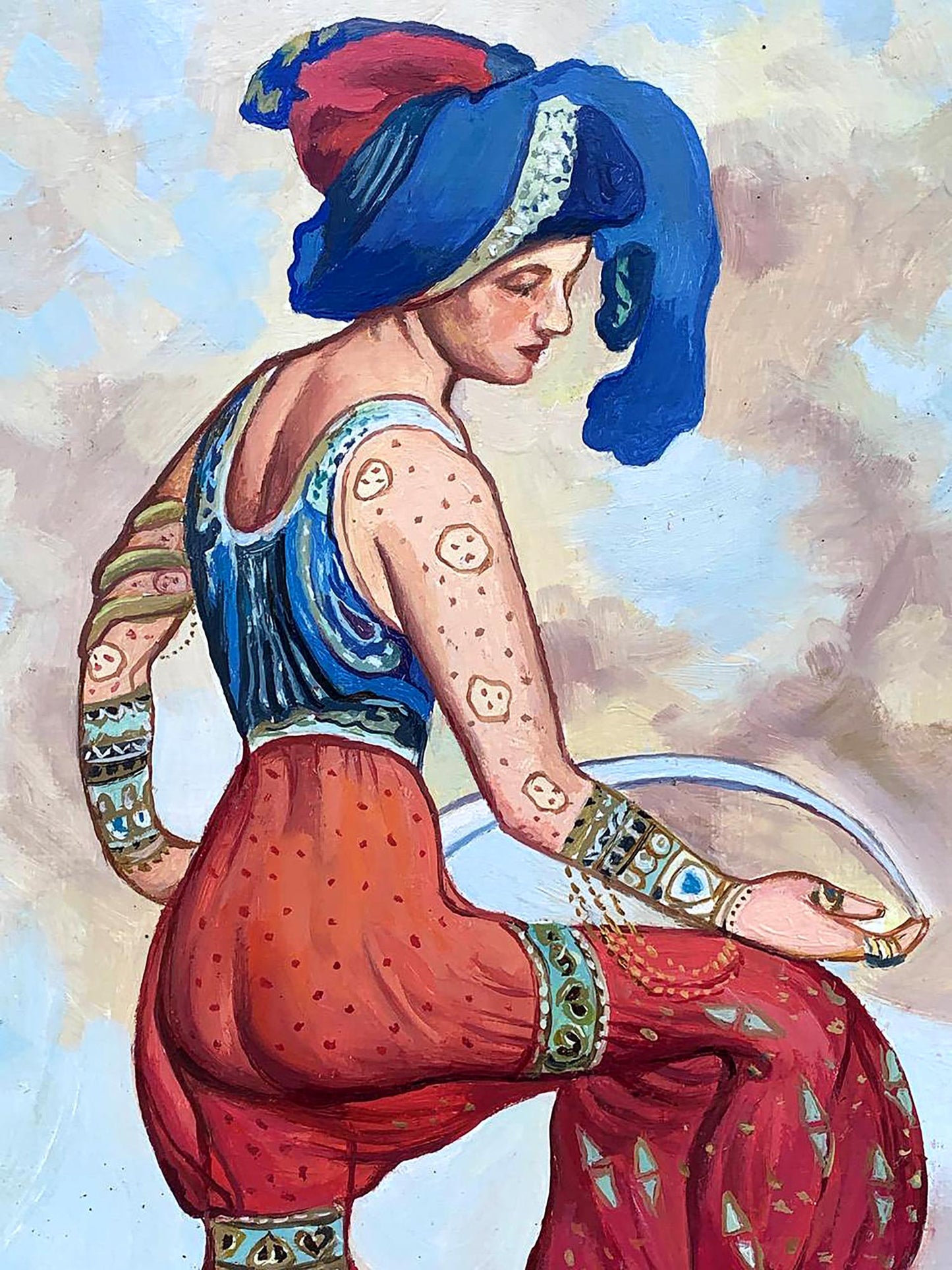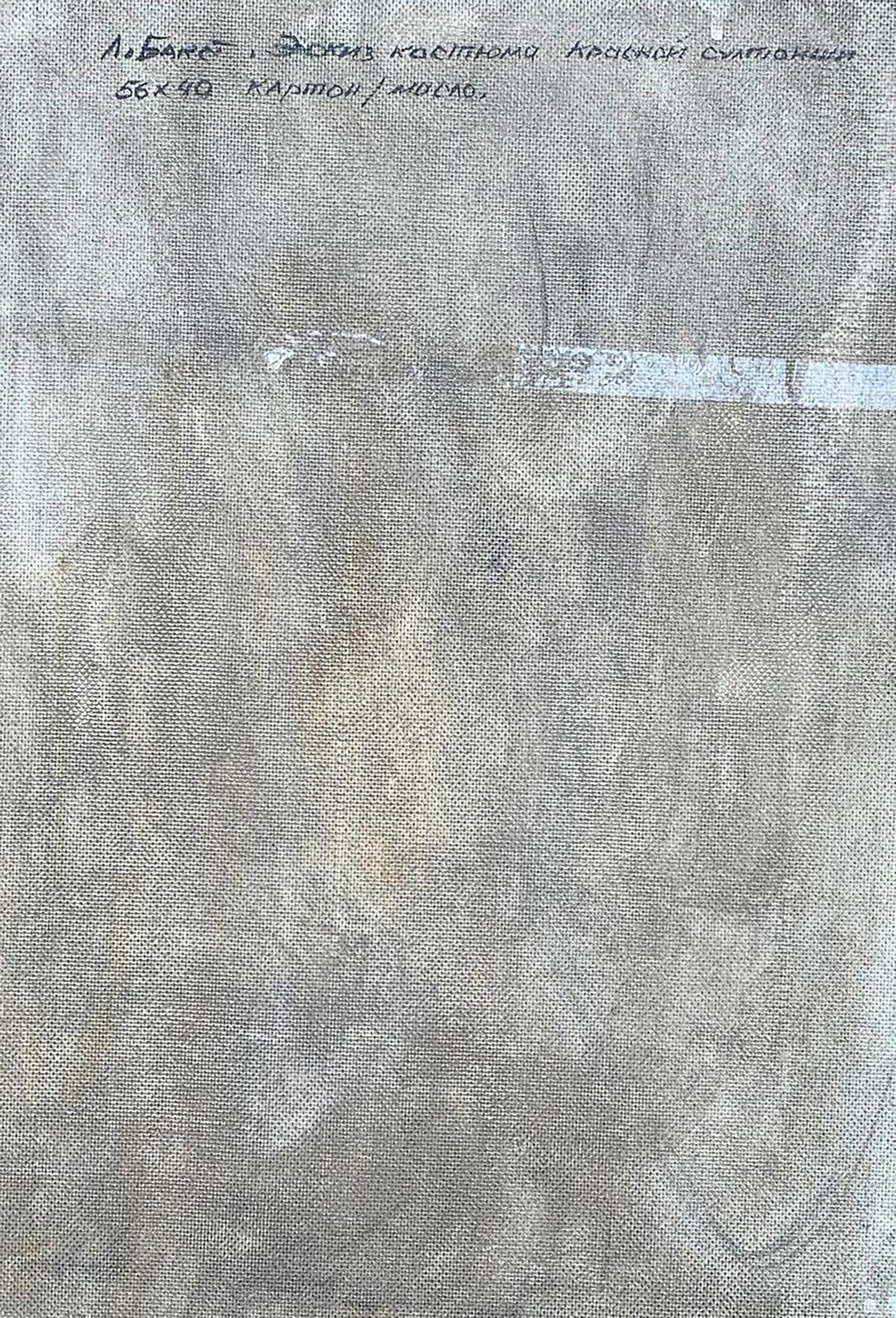1
/
of
9
Oil painting Sketch of the costume of the red sultana Bakst Lev Samoilovich
Oil painting Sketch of the costume of the red sultana Bakst Lev Samoilovich
SKU:S1628
Regular price
$600.00 USD
Regular price
Sale price
$600.00 USD
Taxes included.
№1628
*** ABOUT THIS PAINTING ***
* TITLE: "Sketch of the costume of the red sultana"
* ARTISTS: Bakst Lev Samoilovich
* SIZE: 56x40 cm/'22.04x15.74 inches'
* MEDIUM: oil, cardboard
* HAND PAINTED: Original painting from our collection
* CONDITION: we tried to convey the maximum information with the help of photos about this product
About the artist: The mature period of Bakst's work begins in the 1900s - by that time he was already a recognized virtuoso in book illustration, theatrical scenery, as an easel painter and painter[6].
In 1903, in Warsaw, he accepted Lutheranism for the sake of marriage with Lyubov Pavlovna Tretyakova, daughter of P. M. Tretyakov, widow of the artist N. N. Gritsenko[14][15]. To conclude the marriage, he applied with a request to the highest name in order to receive the surname Bakst instead of the surname Rosenberg, and received the highest permission to be called Bakst. The marriage with Lyubov Pavlovna Tretyakova quickly fell apart, resumed in 1906, and finally broke up again in 1907, before the birth of their son Andrei [14].
In 1906-1910, together with Dobuzhinsky, Bakst directed the art school-studio of E. N. Zvantseva in St. Petersburg [16]. During the revolution of 1905, Bakst worked for the magazines Zhupel, Infernal Mail, Satyricon, and later in the art magazine Apollo. He taught at the school of E. N. Zvantseva. For the first time, Bakst took part in the Paris Autumn Salon in 1905, and since 1906 he was accepted as a life member of the Salon [17]. In the period 1908-1910, one of his students was Marc Chagall. For a demonstrative return to Judaism from Christianity in 1909, Bakst was expelled from St. Petersburg as a Jew without the right to reside[18].
From 1910 he lived in Paris and worked on theatrical scenery, in which he made a real revolution. He went down in history as the author of the production designer of the performances of the Russian ballet Diaghilev's "Cleopatra" (1909); "Carnival", "Scheherazade" and "Firebird" (1910); "Narcissus" and "Vision of the Rose" (1911), "Afternoon of a Faun" and "Daphnis and Chloe" (1912), the scenery and costumes for which caused a real sensation and became a "revolution" in the fashion world[19]. Bakst's stylizations, his creative rethinking of ancient and oriental motifs created a fashion in Europe for turbans, bloomers, kimonos, Persian embroidery and ornaments[20][21][22].
In the early 1910s, Bakst began to seriously engage in the creation of clothing models. Among his clients were very noble persons: Grand Duchess Elena Vladimirovna (granddaughter of Alexander II), French actress Eva Lavaliere, Russian aristocrats Fyokla Georgievna Orlova-Davydova, beautiful sisters Elena Pavlovna Olive and Princess Natalia Pavlovna Gorchakova [23].
During his visit to Russia in 1912, Bakst received an official order from the authorities to leave St. Petersburg, since a recently adopted law forbade Jews from living in the northern capital. Bakst submitted a personal petition to the emperor and went back to Paris, where in 1914 he received the Order of the Legion of Honor and continued his successful career. In the same year he was elected a full member of the Academy of Arts, but was denied a petition for the right to reside in St. Petersburg[22].
*** ABOUT THIS PAINTING ***
* TITLE: "Sketch of the costume of the red sultana"
* ARTISTS: Bakst Lev Samoilovich
* SIZE: 56x40 cm/'22.04x15.74 inches'
* MEDIUM: oil, cardboard
* HAND PAINTED: Original painting from our collection
* CONDITION: we tried to convey the maximum information with the help of photos about this product
About the artist: The mature period of Bakst's work begins in the 1900s - by that time he was already a recognized virtuoso in book illustration, theatrical scenery, as an easel painter and painter[6].
In 1903, in Warsaw, he accepted Lutheranism for the sake of marriage with Lyubov Pavlovna Tretyakova, daughter of P. M. Tretyakov, widow of the artist N. N. Gritsenko[14][15]. To conclude the marriage, he applied with a request to the highest name in order to receive the surname Bakst instead of the surname Rosenberg, and received the highest permission to be called Bakst. The marriage with Lyubov Pavlovna Tretyakova quickly fell apart, resumed in 1906, and finally broke up again in 1907, before the birth of their son Andrei [14].
In 1906-1910, together with Dobuzhinsky, Bakst directed the art school-studio of E. N. Zvantseva in St. Petersburg [16]. During the revolution of 1905, Bakst worked for the magazines Zhupel, Infernal Mail, Satyricon, and later in the art magazine Apollo. He taught at the school of E. N. Zvantseva. For the first time, Bakst took part in the Paris Autumn Salon in 1905, and since 1906 he was accepted as a life member of the Salon [17]. In the period 1908-1910, one of his students was Marc Chagall. For a demonstrative return to Judaism from Christianity in 1909, Bakst was expelled from St. Petersburg as a Jew without the right to reside[18].
From 1910 he lived in Paris and worked on theatrical scenery, in which he made a real revolution. He went down in history as the author of the production designer of the performances of the Russian ballet Diaghilev's "Cleopatra" (1909); "Carnival", "Scheherazade" and "Firebird" (1910); "Narcissus" and "Vision of the Rose" (1911), "Afternoon of a Faun" and "Daphnis and Chloe" (1912), the scenery and costumes for which caused a real sensation and became a "revolution" in the fashion world[19]. Bakst's stylizations, his creative rethinking of ancient and oriental motifs created a fashion in Europe for turbans, bloomers, kimonos, Persian embroidery and ornaments[20][21][22].
In the early 1910s, Bakst began to seriously engage in the creation of clothing models. Among his clients were very noble persons: Grand Duchess Elena Vladimirovna (granddaughter of Alexander II), French actress Eva Lavaliere, Russian aristocrats Fyokla Georgievna Orlova-Davydova, beautiful sisters Elena Pavlovna Olive and Princess Natalia Pavlovna Gorchakova [23].
During his visit to Russia in 1912, Bakst received an official order from the authorities to leave St. Petersburg, since a recently adopted law forbade Jews from living in the northern capital. Bakst submitted a personal petition to the emperor and went back to Paris, where in 1914 he received the Order of the Legion of Honor and continued his successful career. In the same year he was elected a full member of the Academy of Arts, but was denied a petition for the right to reside in St. Petersburg[22].
Couldn't load pickup availability

